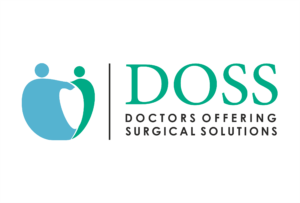The Posture Problem: How Slouching Can Affect Your Hernia Risk?
BlogLiving with a hernia, or the fear of developing one, can bring a lot of questions about your daily habits. You might already know about the risks of heavy lifting or chronic coughing, but have you ever considered the impact of how you sit, stand, and move?
The connection between your posture and a hernia is a crucial, yet often overlooked, part of prevention and management.
Poor posture can place unnecessary strain on your abdominal and core muscles, the very structures that hold your organs in place.
Over time, this constant, subtle pressure can weaken the abdominal wall, potentially leading to a hernia or making an existing one worse. Understanding this link is the first step toward taking control of your health.
This guide will explore exactly how posture affects hernias. We will cover which types of hernias are most influenced by your alignment, how to identify postural problems, and provide practical exercises and lifestyle changes you can make.
By the end, you’ll have a clear roadmap to improve your posture and support your core health.

What is the Direct Link Between Posture and Hernias?
Yes, there is a direct link between posture and hernias. Poor posture, especially slouching or hunching, increases intra-abdominal pressure.
This constant pressure pushes against the abdominal wall, which can lead to the weakening of muscle and connective tissue over time. A weakened area is more susceptible to a hernia, where an organ or tissue pushes through the weak spot.
Think of your abdomen as a container. When you stand or sit tall with good posture, the pressure inside is distributed evenly.
When you slouch, you compress the front of this container, forcing pressure outwards and downwards onto the vulnerable areas in your groin (inguinal) and upper abdomen (hiatal), increasing your risk.
Which Types of Hernias Are Most Affected by Poor Posture?
While any hernia can be aggravated by increased abdominal pressure, some hernia types are more directly influenced by poor posture than others.
- Hiatal Hernia: This is perhaps the most directly linked hernia to posture. Slouching forward compresses the abdomen and can push the stomach upwards through the diaphragm, causing or worsening a hiatal hernia. Symptoms like acid reflux and heartburn are often aggravated by poor seated posture.
- Inguinal Hernia: This common hernia occurs in the groin area. Chronic slouching weakens the entire core, including the lower abdominal muscles that support the inguinal canal. This weakness, combined with pressure from poor alignment, can contribute to the formation of an inguinal hernia.
- Umbilical Hernia: Located near the navel, an umbilical hernia can also be affected. Poor posture leads to a less engaged core, placing more strain on the midline of your abdomen where these hernias occur.
How Can You Tell if Your Posture is Harming You?
Recognising poor posture is the first step towards correcting it. Many people don’t realise their alignment is off until they experience pain or other symptoms. Here are a few signs that your posture might be contributing to abdominal strain.
Common Signs of Poor Posture
- Forward Head: Your head juts forward, out of alignment with your spine.
- Rounded Shoulders: Your shoulders are hunched forward, closing off your chest.
- Anterior Pelvic Tilt: Your lower back has an excessive curve, pushing your stomach forward.
- Chronic Back Pain: Persistent aches, especially in the lower back or neck, are a classic sign.
- Muscle Fatigue: Your muscles have to work harder to hold you up, leading to quick exhaustion.
You can perform a simple wall test to check your alignment. Stand with your back against a wall, with your heels a few inches away from it.
Your head, shoulder blades, and buttocks should touch the wall, with a small curve in your lower back. If your head doesn’t touch or if there’s a large gap behind your lower back, your posture may need improvement.
Can Improving Posture Prevent a Hernia?
Improving your posture can absolutely help prevent a hernia. By correcting your alignment, you reduce the chronic, excessive intra-abdominal pressure that weakens the abdominal wall.
Good posture engages your core muscles, creating a natural “corset” of support that protects vulnerable areas.
For individuals with a high risk of hernias—due to genetics, previous surgery, or lifestyle—adopting good postural habits is a key preventative strategy. It is a proactive way to strengthen your body’s natural defences against this condition.
5 Practical Ways to Improve Posture for Hernia Prevention
Correcting years of poor posture takes time and conscious effort, but small changes can make a big difference. Here are five actionable steps you can start today.
- Practice Mindful Sitting: When at a desk, sit with your back straight and your shoulders back. Your buttocks should touch the back of your chair. Keep your knees bent at a 90-degree angle, with your feet flat on the floor. Use lumbar support if needed.
- Strengthen Your Core: Focus on exercises that strengthen the entire core, not just the “six-pack” muscles. Planks, bird-dog, and pelvic tilts help build deep stabilising muscles without putting high pressure on the abdomen.
- Stretch Your Chest and Hips: Poor posture often comes from tight muscles. Regularly stretch your chest muscles (pectoralis) and hip flexors to allow your body to return to a more neutral alignment. A simple doorway stretch is great for the chest.
- Be Aware When Standing: Stand with your weight evenly distributed on both feet. Keep your shoulders back, your head up, and engage your abdominal muscles slightly to support your spine. Avoid locking your knees.
- Adjust Your Sleeping Position: Sleeping on your back with a small pillow under your knees is often best for spinal alignment. If you are a side sleeper, place a pillow between your knees to keep your hips aligned. Avoid sleeping on your stomach, as it can strain your neck and spine.
Can Exercise for Posture Make a Hernia Worse?
This is a valid concern. The wrong kind of exercise can indeed make a hernia worse by significantly increasing intra-abdominal pressure. High-impact exercises, heavy weightlifting (especially with improper form), and exercises like traditional crunches or sit-ups should be avoided if you have a hernia or are at high risk.
However, gentle, controlled exercises designed to improve posture are generally safe and beneficial. The key is to focus on stabilisation and endurance rather than heavy straining.
Always listen to your body and stop if you feel any pain or pressure in the hernia area. Consulting with a physiotherapist is the safest way to get a personalised exercise plan.
Safe vs. Unsafe Exercises for Hernia and Posture
Safe Exercises (Focus on these) | Unsafe Exercises (Avoid or Modify) |
Pelvic Tilts | Heavy Squats / Deadlifts |
Planks (modified on knees if needed) | Traditional Abdominal Crunches |
Bird-Dog | Leg Press Machine |
Glute Bridges | High-Intensity Interval Training (HIIT) |
Gentle Yoga / Pilates | Contact Sports |
Key Takeaways
1.Direct Link: Poor posture, especially slouching, directly increases pressure on your abdomen, weakening the muscular wall and increasing hernia risk.
2.Most Affected Hernias: Hiatal and inguinal hernias are particularly influenced by poor postural habits.
3.Prevention is Key: Improving your posture can reduce chronic strain and is a powerful tool for preventing a hernia or managing an existing one.
4.Safe Exercise is Crucial: Focus on gentle core strengthening and stretching. Avoid high-impact activities and heavy lifting that could worsen a hernia.
5.Be Mindful Daily: Small adjustments to how you sit, stand, and sleep can lead to significant improvements in your core health and overall well-being.
Protect your core health with expert hernia care. Consult DOSS India today for guidance, prevention, and lasting relief.
Frequently Asked Questions (FAQ)
Q1: Can sitting all day cause a hernia?
A: Sitting all day, especially with poor posture, can contribute to the development of a hernia. Prolonged slouching weakens core muscles and increases pressure on the abdominal and groin areas, creating conditions that are favourable for a hernia to form.
Q2: What is the best sitting posture for a hiatal hernia?
A: The best sitting posture for a hiatal hernia is to sit upright with your shoulders back and your spine straight. This elongates the torso and reduces upward pressure on the stomach, which can help alleviate symptoms like acid reflux. Avoid slouching at all costs.
Q3: Can wearing a posture corrector help with hernia risk?
A: A posture corrector can be a useful tool to remind you to maintain good alignment, but it should not be relied upon as a long-term solution. The goal should be to strengthen your own muscles to hold a healthy posture naturally. Over-reliance on a brace can weaken your postural muscles.
Q4: Can poor posture cause pain that feels like a hernia?
A: Yes, poor posture can cause muscle strain and nerve compression in the abdomen or groin that might mimic hernia pain. However, it’s essential to get a proper diagnosis from a healthcare professional to rule out or confirm a hernia.
Q5: How long does it take to see benefits from improving posture?
A: While you might feel some immediate relief from pain by correcting your posture, it can take several weeks to months of consistent effort to retrain your muscles and make good posture your default habit. Consistency is more important than intensity.


 +919011100010
+919011100010 


